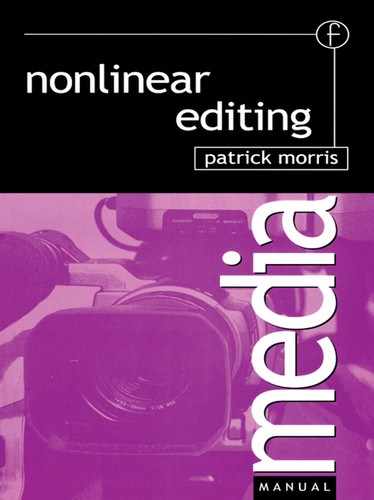Appendix C
Recording formats and what they offer
AH the formats and systems covered in this appendix have tried to address one or more of the following requirements of the programme maker and broadcaster:
• compact size;
• relatively low cost;
• faster transfer rates;
• future proof, e.g. widescreen capable.
DIgi-Betacam
Digi-Betacam is presently Sony’s flagship recording technology. The system uses a discrete cosine transform (DCT) process with bit rate reduction (BRR). This sounds very technical but in essence this technology provides very high quality images while using a small degree of compression (2:1). On the high end systems dual aspect ratios are supported: 4:3 and 16:9. Widescreen is an interesting aspect with digital technology and has implications for both production and post-production.
The format offers four independently accessible high quality audio tracks, as well as timecode tracks.
One other feature of Digi-Betacam is its backward compatibility to Beta SP, i.e. Beta SP tapes can be played back on a Digi-Betacam machine (if you have the right model!).
As a product it has proved to offer high quality and reliability, but at a cost. It is not cheap and maintenance can be expensive.
Digi-Betacam has been around for some time and as such is not really one of the ‘new’ formats that are flooding the market.
DVCPro (25)
DVCPro (25) is Panasonic’s offering of a cost-effective solution to electronic field production (EFP) and electronic news gathering (ENG). Panasonic has offered the recording as an open technology, which third party manufacturers can also use. For example, Avid, Truevision and Montage have developed capture cards that will accept the DVCPro format directly.
The format uses a small ¼″ tape, with tape transports and processing offering backward compatibility to the domestic DV format. The recording system is proprietary but is based on an intraframe compression process. This accommodates frame-accurate editing. Compression is applied at the level of 5:1 and the data rate is 25 Mbits/s.
While the DVCPro (25) only supports two audio tracks on tape it does offer 4 x real-time transfer rates for editing. In effect 12 minutes of rushes can be transferred to hard disk in 3 minutes – an attractive feature, particularly in fast turnaround environments such as news, sport and current affairs.
DVGPre ISO)
This is the big brother to the DVCPro (25). As the 50 in its name implies it offers higher data rates and less compression (3:1). As such the DVCPro (50) is aimed at high-end productions. The family includes products offering switchable widescreen aspect ratios and high definition TV formats. The DVCPro (50) is also backward compatible to the DVCPro (25). Four audio tracks are supported, as well as 2 x real-time transfer of data to hard drive.
DVCAM
This is Sony’s offering at the semi-pro level. The format uses a 5:1 compression ratio, with faster than real-time digitizing, when used with Sony’s proprietary digitizing cards. The compression process is intraframe, allowing frame-accurate editing. Audio is switchable between 2 and 4 audio tracks, the 2 audio track option using 16 bit quantization and 48 kHz sampling. If in 4 audio track mode the quantizing is based on 12 bits and a sampling frequency of 38 kHz. Studio playback machines will also play back consumer DV format tapes.
Betacam SX
Here Sony have opted for an interframe compression system, based on MPEG 2. Compression is applied at a level of 10:1. Four digital audio tracks are available, all high quality, using 16 bit quantization and 48 kHz sampling.
The format also offers a useful shot logging system that will allow ‘OK’ or ‘NG’ (no good) takes to be logged. These references aid fast identification of all the good takes when editing. Widescreen (16:9) and normal 4:3 aspect ratios are selectable. The only real question mark over the format is the use of MPEG 2 encoding.
Digital S
Digital S is JVC’s successor to VHS. This is a high quality format. While using an MPEG 2 compression process JVC have wisely incorporated an intraframe component for frame-accurate editing. The compression is applied at approximately 3:1. Two or 4 audio tracks are selectable and the players are backward compatible with S-VHS tapes.
Broadcast Recordable Video CD
This offers nonlinear access to rushes – what every editor wants. At the moment, though, only prototype products have been demonstrated. NEC have shown a system using MPEG encoding. The main problem is that of gyroscopic movement of the camera during recording. When a solution is found, such a system would be very popular for fast turnaround productions such as news and sport, offering shoot and record to a CD and random access to the rushes for editing.
Avid/lkegami
The Camcutter also offers instant access to rushes. Here the recording medium is a hard disk. The system uses JPEG compression for the video with four digital audio tracks. When the ‘field pac’ or dockable hard disk is plugged into the Avid Newscutter, the editor then has instant access to the rushes. While the system has been used successfully, the cost of the field pacs has probably restricted its use on a wider scale.
DV
This consumer format, targeted at replacing VHS and HI 8, is a digital format offering very good quality pictures and better multi-generation capabilities than its analogue equivalents. Compression is 5:1 and two audio tracks are available. As noted above, both Panasonic and Sony are offering compatibility (for playback) on their professional systems.
